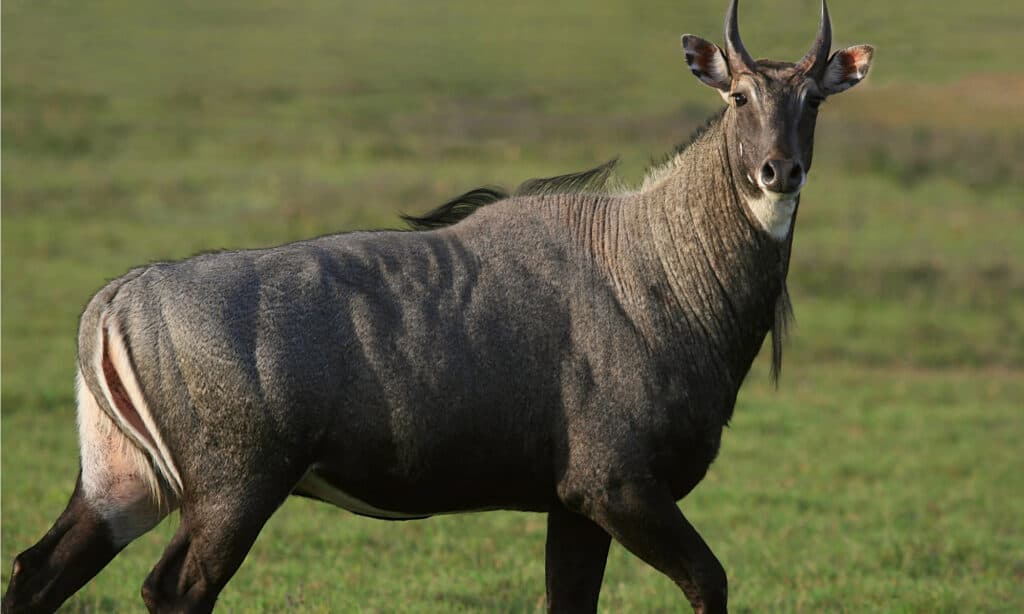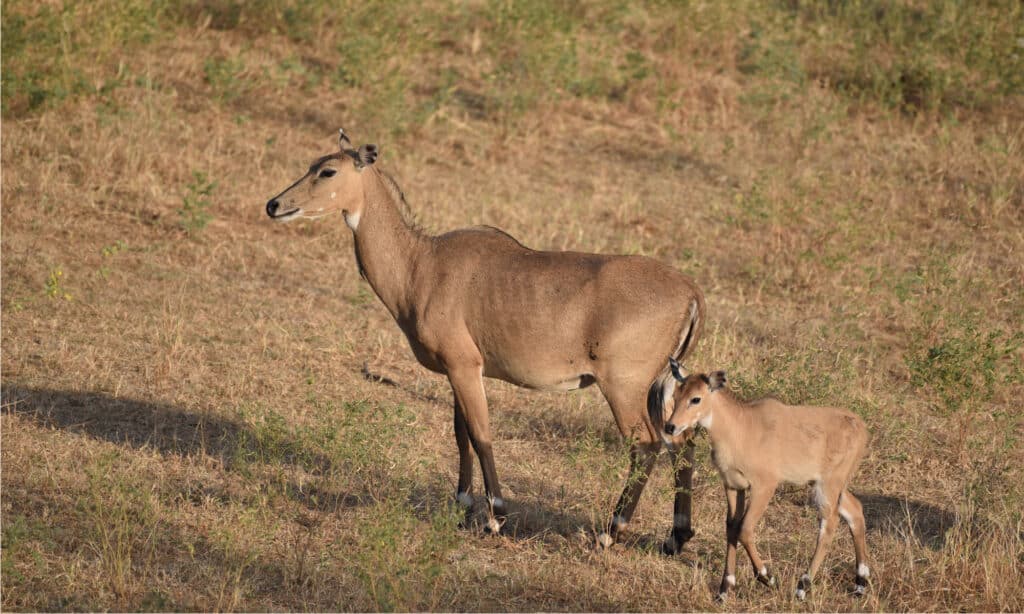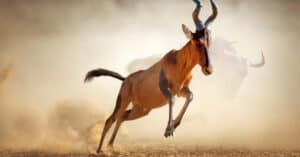As this video begins, we see a huge antelope in a wooded area. It appears to be in distress, but the cause is unclear at first. Then, we see that a tiger holds the antelope’s back leg in an attempt to take it down. The antelope screams in pain but cannot escape the tiger’s grasp in the thick brush. The video ends before we see the outcome, but the antelope likely became dinner for the tiger. Let’s learn more about this massive antelope species!
Watch the Massive Antelope vs. Tiger Video Below!
What Species is the Massive Antelope?

A nilgai bull’s gray coat appears almost blue and their color darkens with age.
©Raymond Pauly/Shutterstock.com
The beautiful, massive antelope in the video looks different from most we have seen before. With its blueish hue and gargantuan size, what type of antelope could it be? Let’s find out!
Filmed in India, the video captures the struggle between a nilgai and a Bengal tiger. Both species are native to the area, though the tiger population is severely endangered. Nilgai are listed as least concern on the International Union for Conservation of Nature (IUCN) Red List of Endangered Species. Nilgai are the largest species of antelope in Asia. They are so numerous there that many consider them pests.
Bulls (males) of this massive antelope species have blue-gray fur that darkens to nearly black as they age. Females (cows) and babies (calves) appear in varying shades of light brown. Cows typically produce one to three calves per mating. Twins and even triplets occur in several other antelope species, as well. A few of these include pronghorn and saiga antelopes.
Nilgai in Texas

Nilgai cows and calves appear light brown. Bull calves will darken as they age.
©Sajeev Bhaskaran/Shutterstock.com
Originally endemic to India and Pakistan, nilgai also became a well-rooted species in Texas, U.S. According to the Texas State Historical Association, the massive antelope species was introduced in the 1930s. The species existed in zoos in the U.S. as early as the mid-1920s, but King Ranch released them into south Texas. Some say this was an accident, but most sources imply it was intentional.
Truly a massive antelope species, bulls weigh up to 700 pounds. As such incredible trophy animals, these bulls regularly become prey for human hunters. In fact, the Texas Parks and Wildlife Department (TPWD) hosts a raffle each year to win a hunting trip to pursue the beasts. Their website proudly boasts the winners of these raffles as far back as 2019. Though many do not agree with hunting them, the meat of the nilgai is highly prized. Consumers of nilgai say it tastes similar to venison though less gamy. Hindu people consider them sacred and do not hunt or eat them.
More nilgai may exist in Texas than in their native home today, but we were unable to find definitive numbers. Estimates for native Indian nilgai range from 10,000-250,000 individuals while those for Texan nilgai range from 10,000-30,000 individuals. Scientists do not expect the Texan nilgai to spread far as they do not tolerate cold temperatures well. There are no comprehensive studies of the creatures yet.
Thank you for reading! Have some feedback for us? Contact the AZ Animals editorial team.








